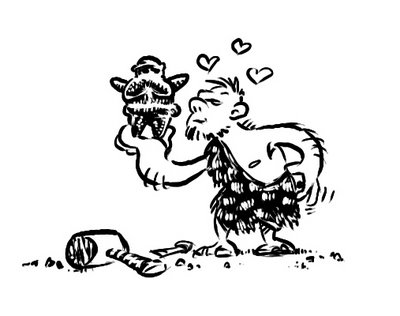
We’ve seen that our personal preferences for what we like about Art appear to be the only things that count when we label something good or bad. Those preferences might be shaped by many things. Maybe one of us, let’s say you, likes Bob Ross’ paintings of happy little trees. And let’s say the reason that you do is that when you were a kid your parents had one hanging above the couch in the living room where their elitist snob friends could make fun of it when they came over for bridge night. But you didn’t care. It was the first work of art you were exposed to and it made an impact. It influenced the kind of Art that would attract you for the rest of your life. There’s nothing wrong with that.

But the reason you like the happy little trees has nothing to do with the painting itself per se. It’s because your experiences influence what you find attractive or compelling about any work of Art. It’s familiar. It might remind us of other work we already like. Or it might remind us of things that have nothing to do with Art whatsoever.
The mountains and the tree lined lake might recall that camping trip you took with the family when you were eight. You remember that one, right? How the lake was cold and how the forest smelled of pine? How you went canoeing and your brother Charlie stood up and fell in? How everyone laughed about it as they drank hot cocoa and made s’mores around the campfire? Mmmm...good times. We project a lot onto a piece of Art that we appreciate, and it all has to do with our own preferences and range of experience.
Or does it?
The Musical Mind
Aside from what we bring to our appreciation of a work of Art, could there also be something inherent in that work that just makes us go all floopy when we experience it? Could it be that when we listen to Yesterday by the Beatles it contains some basic element that universally appeals to anyone who plays it on the car stereo on their way to work?

When talking about music there surely could be. Musical scales sound right to us because they match the frequency ratios that our brains are biologically programmed to detect. All cultures have music. It’s also been shown that listening to music helps with the brain’s ability to learn language. So it could be that we really are moved by something within a Lennon/McCartney composition itself that has nothing to do with our own preferences. We like it because the music dictates that we do.
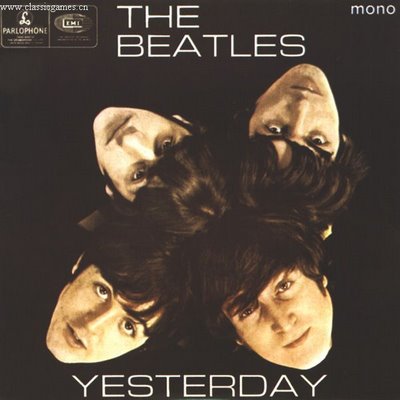
If you don’t happen to like Yesterday, even if it contains those magical frequency ratios, it could be for other reasons. Those reasons are your subjective projections on the music. Maybe Yesterday was your boyfriend’s favorite song and now you hate it because the bastard broke your heart. So to you, it’s bad Art - but it’s not inherently bad. That’s just your opinion rearing its head again.
But you can dislike a song because of its supposed inherent properties too. Maybe the song's frequency ratios just don’t match up with what the human brain likes to hear. Listen to My Pal Foot Foot by the Shaggs to understand what I mean. But be warned. You just might end up liking it because it’s so ridiculously bad you can’t help it.
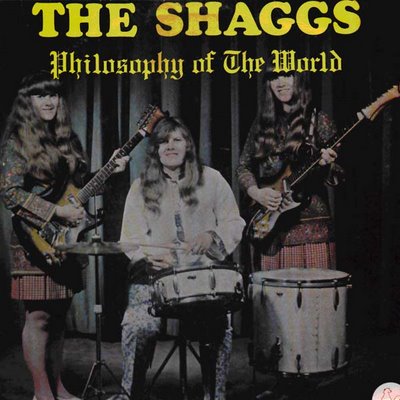
The Artistic Eye
So music seems to have that little zing that makes us go, “Ooooh...!” What about visual Arts like paintings, drawings, or sculpture? Are our brains structured to naturally be attracted to forms we see within something like this painting by Lawrence Alma-Tadema?
Silver Favourites looks like a painting of some women lounging around and feeding some fish. It’s not a particularly famous painting. You probably don’t have any knowledge as to what the artist meant for it to be about other than what we can recognize in it. The women, fish, and ocean are all familiar shapes to us. At least to most of us.
But there are other things afoot that hold our interest. Alma-Tadema used some age old visual devices to make sure we are drawn in. Through the use of composition and lines of motion he leads our eyes around the painting. We might not even be aware of this because we have little choice.
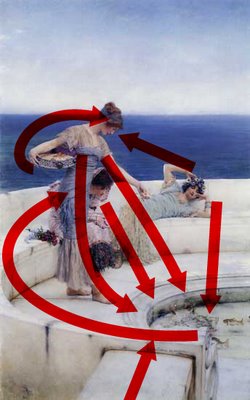
The curve of the bench leads us up to the women. The positions of their bodies point even further toward the center of their group until we follow an outstretched arm pointing toward the fish in the pool. Then the fish lead us back into the bench again and were led around once more. We’ve been manipulated into looking at what the artist wants us to see and when he wants us to see it. Add to that the sensuality that the young girls portray, and we see that another primal urge is being exploited. It’s kinda sexy.
It would appear then that much of our Art has elements within it that makes us react to it in a certain way. All this without it being some additional meaning conveyed by the artist, or without us bringing our own conceptions as to whether it’s crap or not. Does that mean then that Alma-Tadema’s painting is good whether we have an opinion on it or not? Our opinion doesn’t count anymore? Not at all.
Whoa there, Trigger
These are devices that artists like Alma-Tadema or Lennon and McCartney purposely use to help us understand their work. They might even be used unknowingly as well. Since artists are humans just like everyone else, they naturally tend to add these elements into their work unconsciously because it looks or sounds good to them, too. But it’s not a requirement that they be used, and a painting or a song that does have them isn’t automatically better than one that doesn’t. Once again...it’s all dependent on what the artist’s intentions were when he used these devices.
Now here’s the rub. We might now believe that all of these works of Art have some magic in them that flips a trigger in our senses and causes us to swoon over their beauty. But there’s a problem with that. Our brains notice this stuff all around us in nature where no intention has been made by any artist to evoke any emotion in us whatsoever. That’s why we see faces and patterns where none exist. Yes, I’m talking to you people who think there’s a face on Mars. It’s not there. Get over it. We just perceive it to be a face because our brains have been biologically wired to see these things.
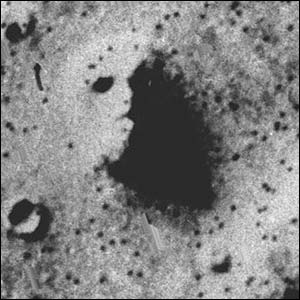
Therefore, if these triggers don’t actually exist in nature then...Oh my....they really don’t exist in the Art either! They are used as tools by the artist because he knows that we’ll react to them just as we do when we see them in nature. This is just another piece of information that we bring along with us when we form an opinion about a work of Art. It’s just that it’s biologically hard-wired into us!
The Man Who Wasn’t There
Take this self portrait by Rembrandt for instance. We recognize his face, but what are we actually seeing? In reality we aren’t looking at a face at all. It’s paint on a two-dimensional canvas. The artist has merely taken advantage of our ability to pick out faces where they don’t exist. Rembrandt “tricked” us into recognizing his face. Yes, I said “tricked.”
It’s not meant to be malicious, but Rembrandt merely moved paint around in a very skillful manner until he created a pattern that he knew others would recognize as a three dimensional visage lit from the left side. The light that’s illuminating the “face” is a trick too, and isn’t really there either. You can tell this if you turn out the lights in the room and the painting doesn’t allow you to read by it. Get up close enough to touch the face (before you’re kicked out of the museum) and you’ll feel that it’s not really three dimensional at all, like it appears.
Just One More Thing
As an aside, if Art is an interpretation of one’s own universe, then we have to take into account the universe of anyone putting forth their interpretation. A person might not be hard wired by nature to see these triggers instinctively. If that person therefore creates an interpretation of their universe and has no intention of using those triggers, then Art isn’t defined by who can make it.
My (up to this point) good friend John is going to have a cow when I continue to suggest that this means humans didn’t invent Art. We just developed our version of it. Art is a universal concept, kind of like gravity. It applies to anyone or anything that can create something that is an interpretation of its own universe. As long as it follows the rules and has some intention behind it, of course. So wookiees living on a world orbiting a distant sun theoretically also have the ability to create Art according to the definition. We may not understand their wookiee Art or even recognize it if we see it. And since Chewbacca is only hypothetical, we don’t have to concern ourselves about it.
Yet.

Next time: Dick Blick vs. Michael's

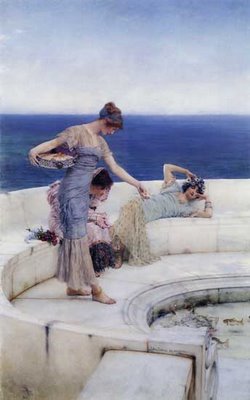

Wookiees can't make art either! LOLOL
ReplyDeleteGreat essay. The Alta-Tadema painting is very sexy. And where else can we get a serious discussion that includes Rembrandt and The Shaggs?